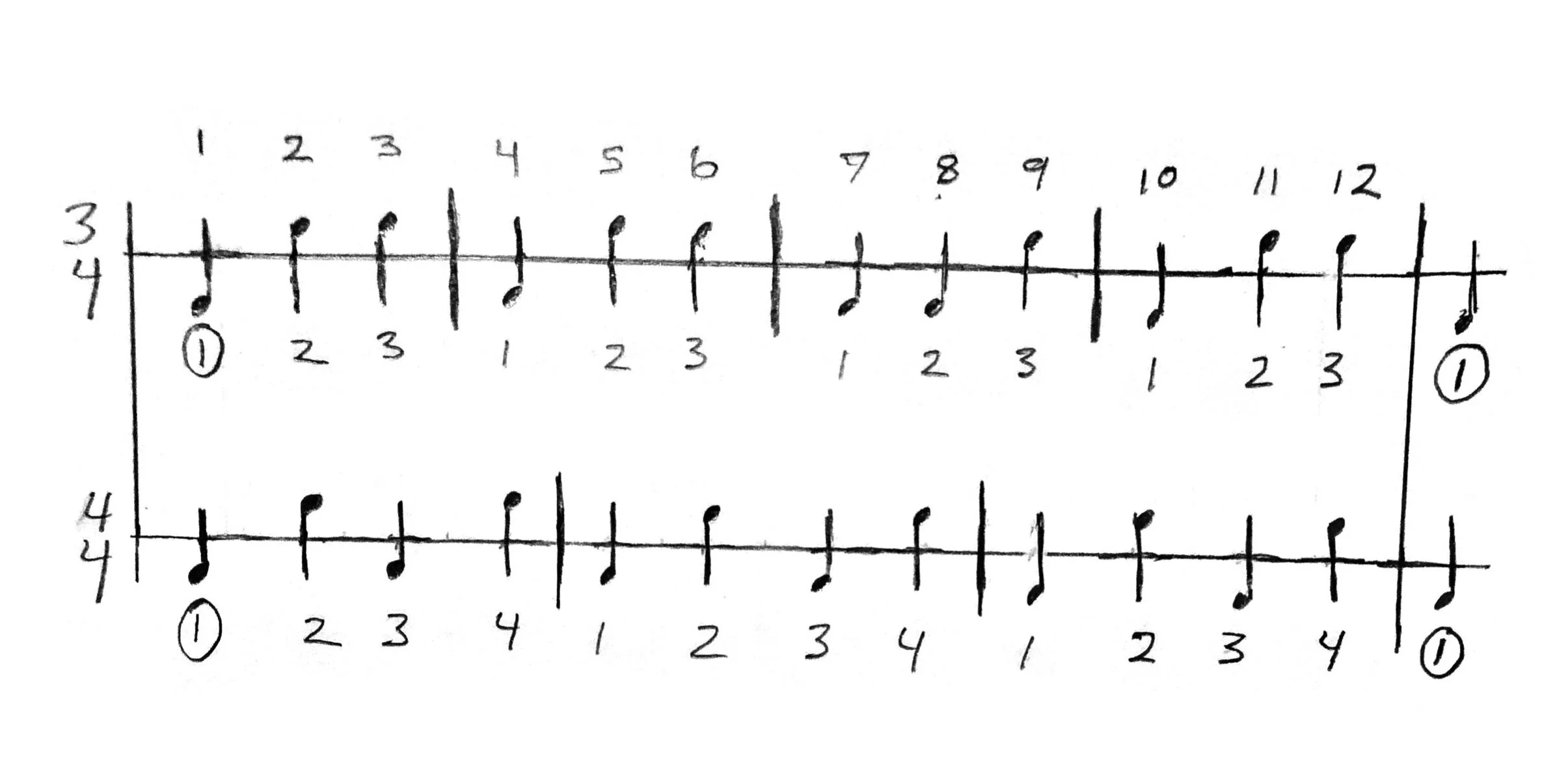Of Montreal takes things a few steps further. Rather than writing four bars of 3/4 (which would have resolved very neatly over twelve beats), Kevin Barnes writes six bars (or eighteen beats), this causes the resolution of the 3/4 section to happen in the middle of the drum pattern, on beat three instead of beat one. “Beat three” is a little like “beat one’s” identical twin. They look and sound the same but when you get to know them you find out that... THEY ARE NOT THE SAME. This is uncomfortable. We don’t know who is “beat one” and who is “beat three”.
So, what do we do? Are we doomed to live the rest of our lives, or at least live the rest of the song with “beat three” as “beat one”? No! Of Montreal has the answer. They add two measures of 4/4, as a little holding pattern, then repeat the same six bar (eighteen beat) 3/4 section, which presto chango brings things back into alignment, they add four measures of 4/4 as buildup and then deliver on the awesome high note on beat one. That is the point where the chords, melody and rhythm reach a simultaneous and glorious resolution. It is awesome. Our lives are once again made whole. See the diagram…


